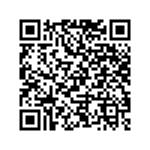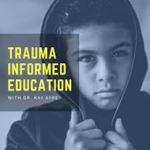3 The Power of Sport to Regulate, Relate and Reason with Megan Bartlett
Megan Bartlett
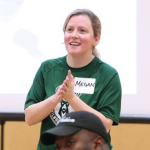
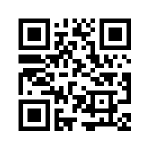 Megan Bartlett has spent most of her career designing and advocating for programs that use sports to promote youth development and positively impact communities. She regularly speaks on the power of sports to create social change and help kids heal. She also co-authored the book “”Redesigning Youth Sports: Change the Game””. Megan serves on Nike’s global training advisory group. She is also working with Dr. Bruce Perry and the Child Trauma Academy to create the neuro-sequential model in sport, a trauma-informed sport intervention model.
Megan Bartlett has spent most of her career designing and advocating for programs that use sports to promote youth development and positively impact communities. She regularly speaks on the power of sports to create social change and help kids heal. She also co-authored the book “”Redesigning Youth Sports: Change the Game””. Megan serves on Nike’s global training advisory group. She is also working with Dr. Bruce Perry and the Child Trauma Academy to create the neuro-sequential model in sport, a trauma-informed sport intervention model.
Learn more about Ms. Bartlett’s work at the Center for Health and Justice Through Sport by clicking or scanning the QR code.
Ms. Bartlett: I attended a small college in New England called Wesleyan University. I studied psychology and sociology as an undergraduate. When I graduated, I was lucky to find a job working in community mental health with families who had children transitioning out of hospital with major mental illnesses. The families needed a lot of support – mental health care, housing, employment, and education. In that job, I learned I was more interested in systems work than one-on-one clinical work. I returned to graduate school for a Masters in urban policy and planning, focusing on community development. After that, I tripped and fell into a job that allowed me to use sport as the intervention. It helped me tackle some exciting social justice questions around equity – like access to sport and other resources we may take for granted in education systems.
The Role of Sport in Wellbeing
Dr. Krishnamoorthy: Could you tell us about the role of sport in children’s lives, and how it educates and supports their wellbeing?
Ms. Bartlett: The one thing that I was most surprised to learn was when I went to work for a non-profit organisation. It was my first sport job. It made me realise that not all kids have the same access to sports. I assumed every kid had the opportunities I had as a young person to participate, in sport. I came to find out, of course, that wasn’t true. Young people in different communities have significantly less opportunity to participate in sport. For some, they may only have access to one sport, and it may not be the sport that speaks to them. If I had only had access to, say, swimming, then, I’m not sure that sport would have played such a significant role in my life. I found these discrepancies certainly ran along socioeconomic and racial lines. From that perspective, the opportunity to provide more opportunities for young people became important. Intuitively, I knew how beneficial sport was for me and wanted to ensure that young people had those same opportunities.
When I think about the benefits of sport for young people, I always want to make sure that we are talking about sport when done right, and not just sport for sport’s sake. We are so familiar with how the sport environment can go wrong for young people. How many young people leave the sport environment because they do not have positive experiences. I’m always careful to ensure that when we talk about the benefit of sport, we’re talking about the benefit of sport when it’s delivered correctly. Physical activity and sport allows a young person to be physically active, which is wonderful. But an inherent part of being involved in sport is that we also know that young people can be turned off for good by the wrong coach or the delivery of physical activity.
Making sure the sporting environment creates positive experiences is important. Being active and with interacting with others is essential. When young people interact with their teammates, the health and wellbeing benefits cumulate exponentially – but only when it is done facilitated thoughtfully. The benefits of sport include working with other young people and developing social skill they’ll need to interact with the world. These are skills that will help them beyond the sporting arena. Much of the lessons learned and benefits reaped from sport occur within the context of meaningful relationships. Meaningful relationships with adults, when sport is done right, creates the opportunity to develop self and situational awareness. The interaction between a child and their team; the child and the game; and the child and the world. These are interactions that children learn to first negotiate in sport, and then in their lives. In this way, when playing sport you are practicing more than just your sporting skills.
“The benefits of sport are wide ranging. Children learn to work with other young people and develop the social skill they will need to interact with the world. These are skills that will help them beyond the sporting arena.”
This overlaps with the work there’re doing from a trauma-informed practice perspective. The ability to regulate, develop strategies for regulation, and manage reactions under stress. Sport presents us with an incredible and unique opportunity to practice those in skills. To take powerful tools for emotion regulation from the sport into other parts of a young person’s life. There are many useful lessons to be learned: Learning how to compete; the discipline of failing and sticking with it – sticking with something even when it’s hard. Planting the idea of plan B and thinking on your feet. Finally, and maybe my favourite, the opportunity to develop confidence amongst your peers. The ability to believe in yourself and potentially even stick to your guns in the face of peer pressure.
 Trauma-informed Physical Education Pedagogy
Trauma-informed Physical Education Pedagogy
 Physical education (PE) is a unique context whereby participation is public, and the body plays a central role. Drawing on our collective experiences of working with care-experienced youth and practitioners in PE, Quarmby and colleagues propose five evidence-informed principles might be helpful when seeking to enact trauma-informed practice in physical education: (1) ensuring safety and wellbeing, (2) establishing routines and structures, (3) developing and sustaining positive relationships that foster a sense of belonging, (4) facilitating and responding to youth voice and, (5) promoting strengths and self-belief.
Physical education (PE) is a unique context whereby participation is public, and the body plays a central role. Drawing on our collective experiences of working with care-experienced youth and practitioners in PE, Quarmby and colleagues propose five evidence-informed principles might be helpful when seeking to enact trauma-informed practice in physical education: (1) ensuring safety and wellbeing, (2) establishing routines and structures, (3) developing and sustaining positive relationships that foster a sense of belonging, (4) facilitating and responding to youth voice and, (5) promoting strengths and self-belief.
Click or scan the QR code to learn more about the study findings.
Managing Sporting Environments
Dr. Krishnamoorthy: It seems that social and emotional skills are a critical part of playing a sport. But this isn’t an accident. You are describing a very planned and deliberate process of facilitating sporting environments that help children learn these lessons. Its not just about plonking kids into sport and hoping it will just happen. Tell us more about that.
Ms. Bartlett: How a coach or physical education provider approaches the sporting environment is key to ensuring those lessons are learned. It takes explicit intentionality and deliberate practice to do that. Unfortunately, the idea that young people will be dropped into a sport and learn how to interact with others through osmosis is a myth. Coaches tend to be focused more on maybe technical side of their sport – the practical components and skills – than the ways in which young people are developing or not developing social skills. The skills that enable them to work together as a team. Attributes and skills that a young person would be able to take beyond the sporting arena.
In my work, primarily in training coaches, the first step is changing the mindset. I help them reflect on their approach to working with young people. First, I ensure that they understand how important relationships are and how invested they should be in that part of the coaching process. Fortunately, we can do that in a way that keeps their desire to see better performances. Good relationships should feed both the social and emotional learning of the young person, as well as their ability to perform better in their sport. Thinking about both wellbeing and performance – not just one or the other. This is a major reset for many coaches. They’ve just come into the sport thinking they will share their knowledge of that specific sport with children and that those other pieces are sometimes encouraged differently or develop elsewhere.
 Implementing Trauma-Informed Practices
Implementing Trauma-Informed Practices
 Sports and physical education often provide students experiences of success and efficacy that they may be lacking in other areas of their educational experience. How can physical education capitalise on trauma-informed practices? In this podcast, we speak with Dr. Douglas Ellison. He is an assistant professor of Physical Education in the School of Teaching, Learning and Curriculum Studies at Kent University. Dr. Ellison discusses the Teaching Personal and Social Responsibility (TPSR) model of trauma-informed practice in physical education.
Sports and physical education often provide students experiences of success and efficacy that they may be lacking in other areas of their educational experience. How can physical education capitalise on trauma-informed practices? In this podcast, we speak with Dr. Douglas Ellison. He is an assistant professor of Physical Education in the School of Teaching, Learning and Curriculum Studies at Kent University. Dr. Ellison discusses the Teaching Personal and Social Responsibility (TPSR) model of trauma-informed practice in physical education.
Click or scan the QR code to listen to the podcast.
Trauma-Informed Strategies Used by Coaches
Dr. Krishnamoorthy: In interviews and award ceremonies, you often hear professional athletes thanking family, friends, and teams of people supporting them. A lot of those relationships are so important. With all the iconography and narratives about sporting achievements, we tend to forget that. On a very practical note, many kids who have trouble at school also find team sports difficult. It makes sense why they do. What practical things do you suggest to coaches to make the experience of team sports more inclusive for kids who are having a tough time?
Ms. Bartlett: There are a lot of stimuli in sport. We can understand that it can become really challenging for young people who are easily dysregulated. Team environments can be complex and difficult navigate for kids. From a practical perspective, we talk to coaches a lot about ensuring things are as consistent as possible. That there is a sense of predictability about how things will go for young people. For example, predictable routines and responses to transitions is a key strategy. Coaches need to think about how they manage transitions from wherever young people have been into the sport environment. They also need to manage transitions when young people leave the sporting environment to go to wherever they are going next.“We talk to coaches ensuring things are as consistent as possible. That there is a sense of predictability about how things will go for young people.”
As a college athlete and coach, warming up and cooling down were less important than I’ve come to understand. As I’ve become older, I’ve become a person who understands how more valuable those psychological transitions can be for a young person who is managing maybe the chaos of the experience outside of sport. The ability to transition and regulate in a way that allows them to participate fully in practice. Getting coaches to think about those transitions and how other pieces of what they do are very predictable. Making sure they have a routine or ritual around how they transition from one activity to another.
How and when you communicate to young people is very important. Think about talking to young people in circles instead of them on one knee and you standing over them. All the things that we know would help a young person feel safer and make them feel their surroundings are safe and predictable. These strategies should not take up a considerable amount of time and should not require a tremendous amount of change for a coach. Once coaches understand that they play a important role, they are less likely to take these strategies for granted, or not prioritise them.
The other things we talk to coaches a lot about – and coaches could be better at – is the idea of letting young people have some sense of control over their own experiences. Traditionally, the sport is “my way or the highway”, and coaches coach the way they were coached. They often had coaches who said, “You’ll do it this way, and you’ll like it, and you won’t ask questions.” The idea of providing young people with some choice and control over their experience can help engage them in a way that doesn’t feel as threatening.
 Trauma-informed Physical Education Pedagogy
Trauma-informed Physical Education Pedagogy
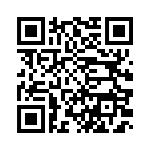 There is growing research and programs that incorporate trauma- informed practices into physical activity programs for young people. But is there research evidence to show they are effective? In this systematic review of research, Berger and colleagues to explore evidence-based, Trauma-Informed Physical Activity programs for young people. The review identified 19 studies that highlighted most Trauma-Informed Physical Activity programs reviewed resulted in positive social, emotional, behavioural, and academic outcomes for children and adolescents.
There is growing research and programs that incorporate trauma- informed practices into physical activity programs for young people. But is there research evidence to show they are effective? In this systematic review of research, Berger and colleagues to explore evidence-based, Trauma-Informed Physical Activity programs for young people. The review identified 19 studies that highlighted most Trauma-Informed Physical Activity programs reviewed resulted in positive social, emotional, behavioural, and academic outcomes for children and adolescents.
Click or scan the QR code to learn more about the study.
Coping with losing and failure
Dr. Ayre: As someone who is not a sporty person or a coach, I found it difficult to observe the school sports teachers helping these kids learn how to lose with pride. If students had more control within those routines, I wonder if it would not seem like just another grand failure because they’ve had some input. I’ve seen kids be so enthusiastic, and as soon as they’re on a losing streak or don’t get the ball or perceive the other child’s getting it, everything goes downhill. They sometimes physically run out of the space. How do we teach them how to lose with pride?
Ms. Bartlett: Giving young people some control and a sense of proportionality in their actions is part of that teaching. Young people who are so triggered by losing, or disproportionately responding to what seems like something insignificant, tend to be the kids who cannot regulate emotions. The students who are the first to explode or leave the classroom or sporting environment. Playing sport can be an emotionally taxing experience. Sport provides a platform in which young people can practice that regulating their emotions.
There are so many strategies that athletes go through -typically as warmup and cool-down strategies – that are patterned, repetitive, rhythmic activities. If a coach can help kids use those things as strategies for regulating their emotions, as opposed to just as a way to warm up or work down our bodies – kids build their emotional regulation skills in a intentional and deliberate manner. Time and time again I’ve seen the benefits of doing this. It helps improve their performance.
I recall working with a young person who needed help losing at basketball. He had a terrible time managing what he perceived as disrespect on the court when he would get bumped under the hoops in the regular run of play. Whatever the circumstances were, he perceived these pushes and bumps as unfair, or the opponent threatening or intimidating him in some way. He was feeling unsafe, and it made him react aggressively.
We worked on a strategy where he would come over to the sideline or out of the game when this happened. Now typically, we see many coaches take a kid out of the game and then push them over onto the bench and not pay attention to them. What we did instead was have him put headphones on and dribble to the beat of a song for the three minutes. He played his favourite song in his headphones for. The way he was able to come back to a more regulated state was incredible. It went from him needing to do that for the three minutes to him needing to do it for about half the song. Then it was for about 30 seconds, to him needing just to come over and not put the headphones on but give himself a couple of dribbles. He was able to come back. We even got to the point where when there was a stop in the run of the game, if he could grab the ball and give himself a few of those dribbles, then he could get back without having to leave the game.
That is a very specific example, but there are ways to give young people those opportunities within sport. So many alternates to exclusion and punishment. We must frame these problems in terms of the child’s learning needs for social and emotional skills. An opportunity to learn to manage stress.
 A Kids Book About Trauma [11:59mins]
A Kids Book About Trauma [11:59mins]
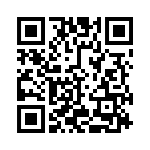 Listen in to this read aloud video with Megan reading from her kids book, A Kids Book about Trauma. The book is designed to help kids understand what trauma truly means, how it affects our minds and bodies, and how movement and relationships can help us on our paths to healing. Because no matter what traumas we may have lived, we all deserve to heal.
Listen in to this read aloud video with Megan reading from her kids book, A Kids Book about Trauma. The book is designed to help kids understand what trauma truly means, how it affects our minds and bodies, and how movement and relationships can help us on our paths to healing. Because no matter what traumas we may have lived, we all deserve to heal.
Click or scan the QR code to watch the video.
Emotional Regulation
Dr. Krishnamoorthy: Thank you for sharing that story. I wanted to ask you about patterned, rhythmic, repetitive movements. What are your thoughts on how teachers can incorporate some of that activity into their classes?
Ms. Bartlett: We know when a young person is dysregulated and wound up, coaches and educators often encourage them to sit silently. But this is often the time when they are least capable of sitting quietly. Allowing a young person to walk or move in some way in those situations is valuable. If you can have a skipping rope in your classroom and let the young person do skipping. Help them do it in a way that does not detract from what is going on in class.
I believe strongly that the act of playing catch with someone is magical. In a classroom, you can use a beach ball – so people don’t get hurt. This back and forth where you have control over the speed, the distance, the velocity, and the whole experience with another person and attuning with that person is so powerful. If a young person is dysregulated and they can play catch with someone that they feel safe with, that is an incredible way to change the trajectory of their experience. It’s a better alternative than sending them out of the class and making them feel excluded.
Dr. Krishnamoorthy: We often think about the repetitive rhythmic activities as something a child needs to go off and do so that they can calm down. You are talking about it in terms of a proactive coregulation experience. Something built into their routines. Something that that teacher and student share as an experience.
Ms. Bartlett: Rhythmic, patterned, and repetitive activities are not just to be used when young people are dysregulated. You can use them at the beginning of class to set yourself up from wherever they’ve been before. When they are transitioning into your class, it can be a way of helping them get to a baseline regulation. This helps to hold or contain them throughout the challenges they might face throughout the day. In this way, coregulation becomes a habit for being healthy and part of what is done in the classroom, and not just a consequence for dysregulated behaviour.
Dr. Krishnamoorthy: What does science tell us about movement and how it impacts the brain?
Ms. Bartlett: I’ve been lucky to work with Dr. Bruce Perry of the Child Trauma Academy. Brain science is complex but I will give you the basics – with the understanding that its more complex than my explanations. Generally, the part of the brain regulating our stress response or response to stimuli in the world can become hyper-sensitive for young people. This is particularly the case for young people exposed to overwhelming stress during critical brain development periods. Once that part of the brain becomes hypersensitive, we see those disproportionate responses we were discussing before. A minor stress is experienced as an enormous stress. That feeling of being fouled in front of the net feels like a bear is chasing you. We know that being fouled in front of the net is not the same experience as being chased by a bear, but our bodies react the same way. Often, young people don’t understand why their body reacts that way or how to calm that reaction. These patterned, rhythmic, repetitive experiences can help calm that reaction and stress response. The most soothing imprint on a young person’s brain is that of their maternal heartbeat. When you find those kinds of rhythms in the world, they can bring a young person back to a baseline with that sense of safety and control.“The most soothing imprint on a young person’s brain is that of their maternal heartbeat. When you find those kinds of rhythms in the world, they can bring a young person back to a baseline with that sense of safety and control.”
I tend to think about some of the unique aspects of different sports that lend themselves to teaching young people regulate their emotions. Sports that can be used to help young people who have experienced trauma to be successful in those kinds of environments. Usually, it’s not that a particular sport that is better or worse for those young people. It is the critical moments within a sport that you can capitalise on if you capitalise on if you know what you’re looking for. For instance, this idea of control can be powerful or really intimidating for a young person. In many cases, it comes down to understanding your sport and why specific scenarios in your sport may or may not be particularly stressful for a young person. It’s linked to this idea of knowing when and where within your sport that a young person is more or less likely to be stimulated in a way that changes their behaviour.
In terms of finding ways to help kids regulate, I’ll take the kid that’s happy and overstimulated every day of the week over the scared and overstimulated, angry and overstimulated, or aggressive and overstimulated kid. We do that by ensuring practices are still structured, even if they’re fun fun. If young people know that after they play the most fun game they’ve ever played in their lives, they’re still going to do a back-and-forth, to cool-down, where they have that opportunity to regulate, then that consistency and that structure can help contain some of that stimulation.
 Somatosensory Regulatory Activities [8:12 mins]
Somatosensory Regulatory Activities [8:12 mins]
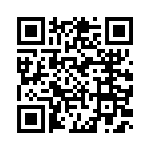 Human beings are social creatures, and because of that, our moods and personalities are extremely contagious to one another. Dr. Perry explains how students and teachers can often impact each other’s mood and brain function and shares effective classroom strategies that help keep students and adults calm and regulated, decrease behaviour challenges, and improve academic engagement. Watch this video to learn from Dr. Bruce Perry about how somatosensory activities children’s bodies and brains.
Human beings are social creatures, and because of that, our moods and personalities are extremely contagious to one another. Dr. Perry explains how students and teachers can often impact each other’s mood and brain function and shares effective classroom strategies that help keep students and adults calm and regulated, decrease behaviour challenges, and improve academic engagement. Watch this video to learn from Dr. Bruce Perry about how somatosensory activities children’s bodies and brains.
Click or scan the QR code to watch the video.
Building Sporting Communities
Dr. Krishnamoorthy: We know schools use sport to engage parents by having sports carnivals and sports days. How do you see sport playing a role in bringing school communities together?
Ms. Bartlett: The sense of identity and belonging that can come from playing a sport or being part of a team can be powerful for young people and their parents. One of the things I find in the communities I work in is that young people go to school in a community with few resources. When a school system is tapped and out of capacity, the reasons that parents get engaged tend to be when something goes wrong. Mostly, those schools tend to be putting out fires instead of proactively dealing with the health and wellness of a young person. In those situations, we like to help coaches think about how they can be a positive link to the school experience, both for the young person and the parents. Can they call up a parent unsolicited and say your kid had a great day today. A lot of parents don’t get that call. A coach working with 25 to 30 young people daily can make that call, especially when they have fewer demands on their time.
“We like to help coaches think about how they can be a positive link to the school experience, both for the young person and the parents.”
Dr. Krishnamoorthy: Sport has that real knack for bringing large groups of people together. It’s a potent tool when used well.
Ms. Bartlett: Research supports this idea that sport has a tremendous impact on your mental health and your ability to cope with adversity. Dr. Perry and I have been doing some webinars on the connection between sport and helping young people heal. One of the things that he said is the best way to help a young person regulate is to be regulated. We often run into adults who become dysregulated because their kids are dysregulated. Sport, physical activity and connecting to the outdoors can help calm our own stress response. It can make us better regulated to deal with a dysregulated young person. That, in and of itself, can set us up for easier days. Its strategies like that that don’t always get the attention it deserves when you’re thinking about behaviour management or regulation strategies.
“Sport, physical activity and connecting to the outdoors can help calm our own stress response. It can make us better regulated to deal with a dysregulated young person.”
Dr. Krishnamoorthy: Are there some sports that suit some of these kids better, or is it about getting to know every student and understanding their preferences?
Ms. Bartlett: It’s probably more the latter. We get asked this question a fair amount. Here is the profile of my young person. What sport should they play? There is no right or wrong answer to that question. As a trauma-informed coach, you need to think through the therapeutic core of each sport for any young person. Thinking through the elements of different sports and how they may or may not contribute to a positive experience for their young person.
For example, a running club may be suited for a young person more than a full-contact sport, potentially based on the background of that young person. If we know that physical touch is a trigger for a young person, then we’d want to start with something like running, swimming or something more individual with less contact. I’ve done a lot of work in New Orleans, Louisiana, where they had a significant hurricane that involved a tremendous amount of flooding. Recommending a young person who’s been through that experience to be a swimmer may not be the most therapeutic experience for them.
It’s also helpful to ensure that the coaches who are working with these young people understand that there are these high-leverage moments within every sport that can either help build coping skills in a young person or can go the wrong way and be detrimental for a young person. If every sport or coach understood that every young person could react differently to some of those high-stress moments, they could become powerful teaching experiences. The foul shot – all eyes on you – can be a high-pressure situation in basketball. Basketballers are taught rituals and routines that help them refocus and not focus on the stress. They do some very ritualised things before they take the shot. The other thing about foul shots is that it’s the only time no one’s playing defence on you.
Now, if you take the elements of a game and deconstruct them in a way that helps you put in perspective those moments for a young person, that’s the best way for adults to help manage that situation. Basketball has fewer people to coach than, say, soccer, but soccer is continuous play, and there aren’t as many stops in the game, so the young person gets to run more. It comes down to how the sport is managed and a young person’s background that contributes to choosing the right sport.
Dr. Ayre: I have worked in schools where the rule was that if young people misbehaved in class they did not get to play sport and represent the school in the sport. I struggled with following that rule because, in my experience, the disruptive young person in the classroom had never stepped a foot wrong on the sporting field. After all, they were so good at it because they were invested in it. They really wanted to do well. Yet I was taking that only opportunity away for them to strive and have some control and some sense of success. And because of the system, we didn’t have a choice. When these opportunities were taken away, their behaviour in the classroom would escalate. They would feel they had been treated unfairly. And in my head, I recall thinking “I know..I’m sorry..I don’t want to do this”.
Ms. Bartlett: We know now with research why a young person can be more successful in a sporting environment often than in a more traditional education environments. I couldn’t agree with you more. Taking away the opportunities for a young person to feel successful and build on the virtuous cycle of experience is a missed opportunity. In the U.S., it comes down to a systematic devaluing of physical activity as a learning tool, instead of really understanding that brain science and research that tells us that sport primes the brain for learning. These credible, science-based information does not always translate to school policy and practice. That’s a shame from the learning perspective. It’s a challenge from the perspective of young people who have been exposed to overwhelming stress because, without that physical activity to help regulate, they really struggle.
Women in Sport
Dr. Krishnamoorthy: One of the key pieces of research is how sport and exercise often drops off for women and girls in those late teenage and early adult years. What are your thoughts about young women’s access to sport and exercise?
Ms. Bartlett: We lose young people at those ages for many reasons. Research in the U.S. has shown that, overwhelmingly, it has to do with a lack of positive experience in those sporting environments. Either they didn’t feel connected to their coach, they didn’t feel connected to their team, or it just wasn’t fun anymore. At the middle school level, this idea of winning becomes a much bigger part of the experience, and the need to measure yourself against other people becomes a big part of the sports experience. It can be very discouraging to girls, particularly when we know that most girls don’t have a woman coach to help them manage it, to help set an example for them to help give their personal experience of how they overcame that, to model that it’s normal to keep going in sport. We need more female coaches at every level in this country. Many of those things intertwine and overlap to create this significant drop-off, particularly in girls in the early adolescent middle school years.
Psychological Injury and Intervention
Ms. Bartlett: The sporting world has a lot of strategies for physical injury, prevention, and intervention. This idea that you do all these things to make sure you don’t blow out your knee, or when you do blow out your knee, you rehab your knee in a certain way for it to heal and become stronger. There are many ways we can learn from those strategies to create psychological injury interventions. The parallel between those two things is something I’ve been thinking a lot about. It lends itself to this understanding of what we can learn from performance sports psychology as a tool for healing.
How can we use self-talk and the ability to regulate for the purpose of being able to perform? Are there things that we can learn to bring that into a healing environment and educate those elite practitioners about when they fail. When they come with the need for more management around their own experiences, can those same strategies be applied to an elite athlete to help them manage their mental health, trauma, and history of adversity? Can we do this the way we help them manage whether they can hit a 95 mile an hour fastball in baseball? This is what I’m curious about now.
Chapter Summary
- Young people in different communities have significantly less opportunity to participate in sports of their choice.
- Trusting and healthy relationships are foundational for a trauma-informed approach to coaching. The student-coach relationship is the vehicle for the student to learn social-emotional skills that will help them with their performance and manage the impacts of their past.
- Build in proactive routines and rituals that incorporate rhythmic, repetitive, and patterned activities to help children regulate their energy and emotions.
- Keeping sporting environments psychologically safe and predictable is important for all children – especially those who may have been exposed to trauma.
- The best way to help a young person regulate is to be regulated.
- Being flexible and responsive to a child’s needs are the hall mark of a trauma-informed coach. If every coach understood that every young person is going to have a different reaction to some of those high stress moments, then they can become responsive to the needs of the child within the sporting environment.
 Listen to the full interview on the Trauma-Informed Education Podcast
Listen to the full interview on the Trauma-Informed Education Podcast
Listen to our full interview with Ms. Megan Bartlett on our Trauma Informed Education Podcast.
Click or scan the QR code to start listening.
References
Ayre, K. & Krishnamoorthy, G. (Hosts). (2019, Jan 08). The Power of Sport with Megan Bartlett [Audio podcast episode]. In Trauma Informed Education. SoundCloud https://soundcloud.com/trauma-informed-education/the-power-of-sport-with-megan-bartlett
Berger, E., O’Donohue, K., Jeanes, R., & Alfrey, L. (2023). Trauma-informed practice in physical activity programs for young people: a systematic review. Trauma, Violence, & Abuse, 15248380231218293.
Quarmby, T., Sandford, R., Green, R., Hooper, O., & Avery, J. (2022). Developing evidence-informed principles for trauma-aware pedagogies in physical education. Physical Education and Sport Pedagogy, 27(4), 440-454.

